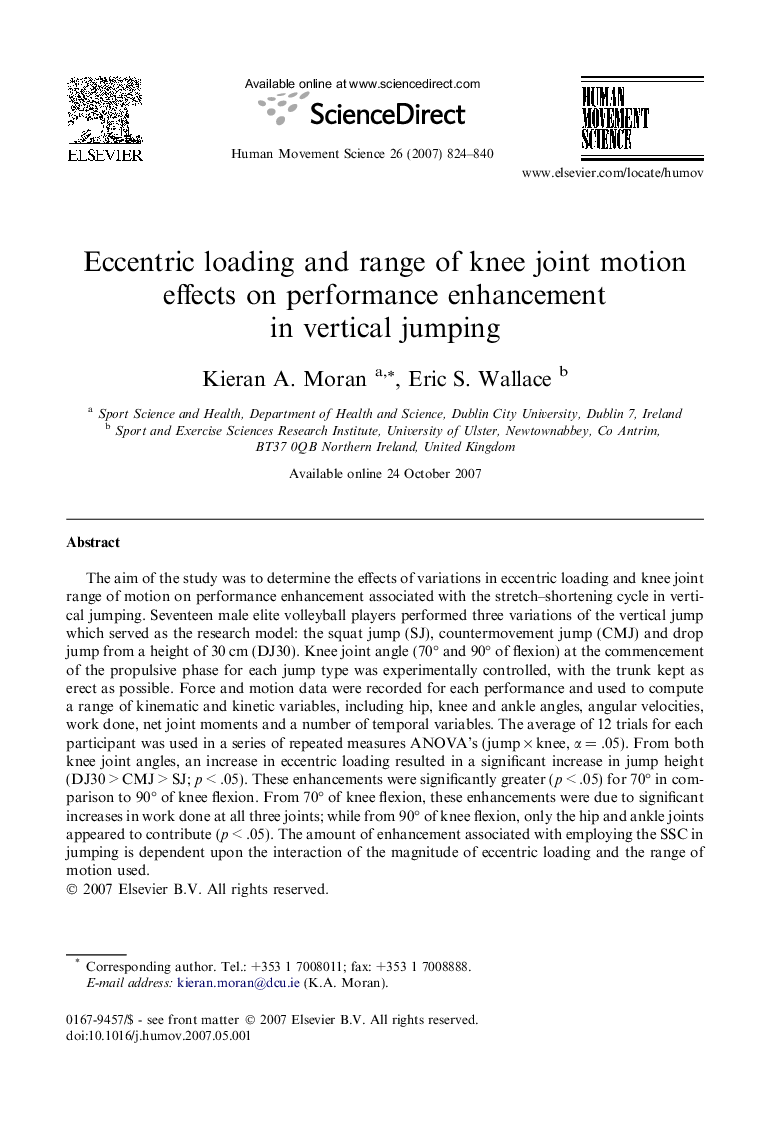| Article ID | Journal | Published Year | Pages | File Type |
|---|---|---|---|---|
| 928814 | Human Movement Science | 2007 | 17 Pages |
The aim of the study was to determine the effects of variations in eccentric loading and knee joint range of motion on performance enhancement associated with the stretch–shortening cycle in vertical jumping. Seventeen male elite volleyball players performed three variations of the vertical jump which served as the research model: the squat jump (SJ), countermovement jump (CMJ) and drop jump from a height of 30 cm (DJ30). Knee joint angle (70° and 90° of flexion) at the commencement of the propulsive phase for each jump type was experimentally controlled, with the trunk kept as erect as possible. Force and motion data were recorded for each performance and used to compute a range of kinematic and kinetic variables, including hip, knee and ankle angles, angular velocities, work done, net joint moments and a number of temporal variables. The average of 12 trials for each participant was used in a series of repeated measures ANOVA’s (jump × knee, α = .05). From both knee joint angles, an increase in eccentric loading resulted in a significant increase in jump height (DJ30 > CMJ > SJ; p < .05). These enhancements were significantly greater (p < .05) for 70° in comparison to 90° of knee flexion. From 70° of knee flexion, these enhancements were due to significant increases in work done at all three joints; while from 90° of knee flexion, only the hip and ankle joints appeared to contribute (p < .05). The amount of enhancement associated with employing the SSC in jumping is dependent upon the interaction of the magnitude of eccentric loading and the range of motion used.
